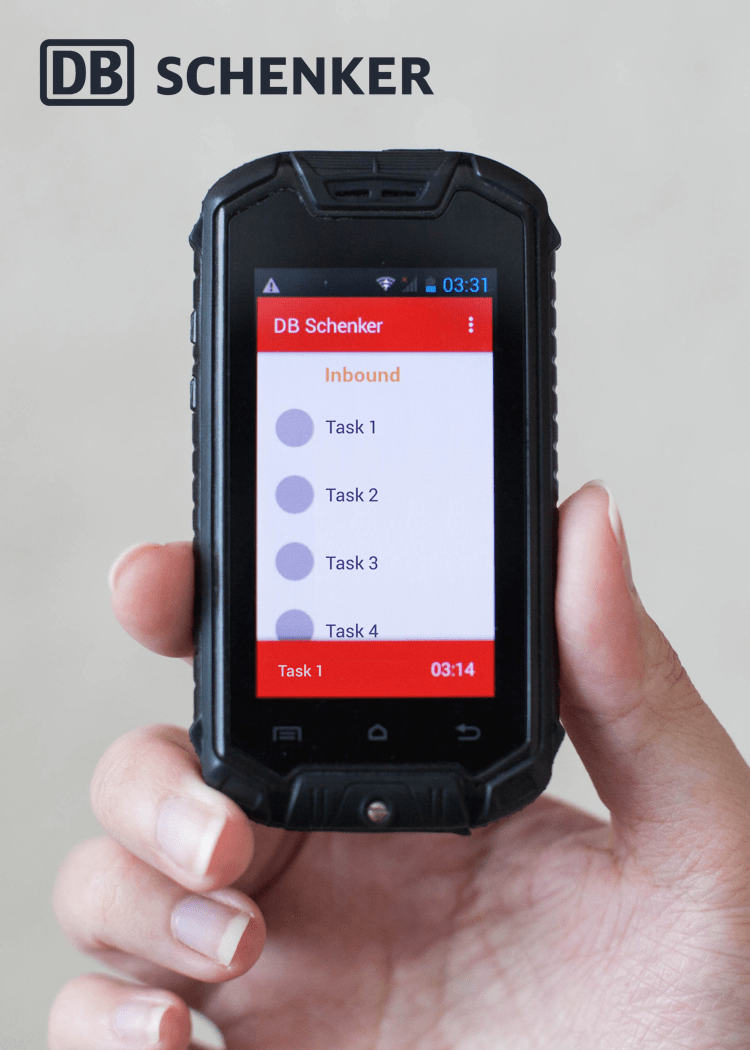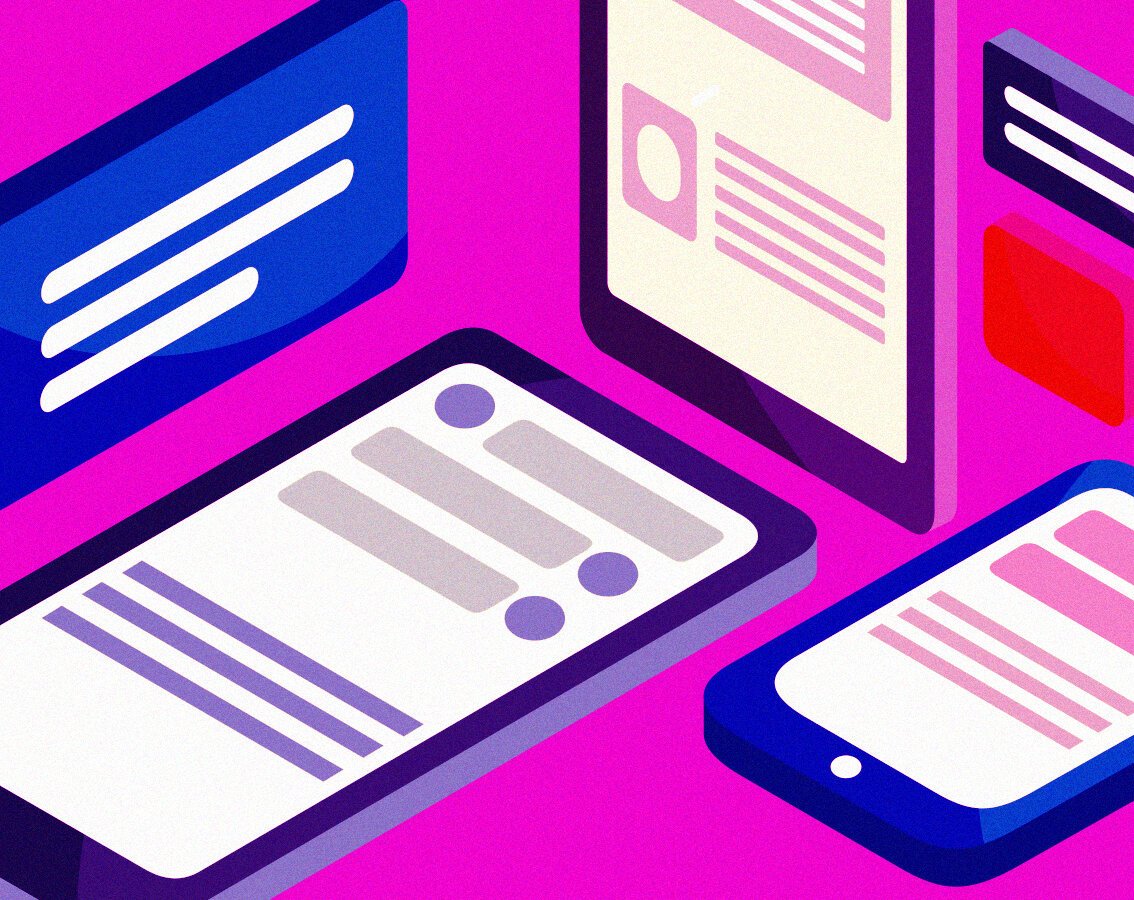blog
Decoding Enterprise Mobility Management: Exploring the What, Why, and How
By Mohan S Enterprise Mobility Digital transformation November 17, 2023

The practice of allowing employees to use their mobile devices to perform work-related tasks while on the go or away from the traditional office setting is known as enterprise mobility. This involves granting them remote or on-the-go access to corporate data, apps, and systems via laptops, tablets, or smartphones.
The significance of enterprise mobility lies in its ability to enhance productivity, flexibility, and efficiency within an organization. Employees can stay connected and complete work-related tasks from anywhere, which eventually improves communication and speeds up decision-making. It also increases flexibility in the workplace.
Enterprise mobility management (EMM) is a strategy used by organizations to secure their mobile workforce by managing mobile devices, apps, and data. It includes components like mobile content management (MCM), mobile application management (MAM), mobile device management (MDM), and identity and access management (IAM).
These practices ensure that an enterprise's mobility needs are met without compromising security or compliance, safeguarding sensitive company data, and enabling employees to work efficiently from anywhere. EMM aims to ensure the safety and usability of mobile technology within the company while enabling the businesses to implement the best enterprise mobility trends..
Components & Technologies in Enterprise Mobility Management
The management of various aspects of enterprise mobility can be made easier with the help of tools found in Enterprise Mobility Management (EMM). These solutions are made to take care of issues related to management, security, and usability, giving businesses a seamless and safe mobile working environment.
1. Mobile Device Management (MDM):
Enterprise Mobility Management (EMM), which was created to address the issues brought on by the proliferation of mobile devices in the workplace, includes MDM as a crucial component. Here are some important attributes and advantages of MDM:
Remote Device Configuration: Using MDM, administrators can set up devices remotely. This makes it easier to make sure that devices are compliant with company policies. It also involves setting up email accounts, VPN connections, and Wi-Fi access.
Security Enforcement: Organizations can use MDM to make sure that mobile devices adhere to security policies. This includes taking precautions like encrypting data, requiring passcodes on devices, and setting up remote wipe capabilities in case a device gets misplaced or stolen.
App Distribution and Management: Administrators have the ability to remotely install and control applications on devices through app distribution and management. This is especially helpful for controlling the installation of unapproved apps while guaranteeing that staff members have access to the business apps they need.
Compliance Monitoring: MDM tools offer information about how well devices adhere to corporate guidelines. This makes it possible for organizations to quickly find and resolve security or policy violations.
Centralized Management: The ability to control every mobile device from a single console is one of MDM's main benefits. This guarantees uniform security policy enforcement and streamlines administration.
Increased Productivity: MDM makes it easier for staff members to remain productive when they're on the go by managing apps, granting safe access to company resources, and simplifying device setup.
To sum up, mobile device management (MDM) is an essential tool that helps businesses manage and secure their mobile workforce, making it safer and more productive.
2. Mobile Application Management (MAM):
The governance and management of mobile applications used inside an organization is known as mobile application management, or MAM. Its main objective is to manage the lifecycle of applications on different mobile devices in order to guarantee data security, adherence to corporate guidelines, and effective use. The key components of mobile application management are as follows:
Distribution and Control of Applications: MAM gives IT managers the ability to disperse, maintain, and update apps on a variety of mobile platforms. It keeps centralized control over app deployment and usage while guaranteeing that staff members have access to the necessary business applications.
Enforcement of Policies: MAM makes it possible to enforce rules pertaining to the use of apps. This entails establishing guidelines for data sharing, installing applications, and making sure security protocols are followed.
Security Measures: App wrapping, containerization, encryption, and other techniques are used to safeguard sensitive data in order to secure corporate data within applications. This protects company data on personal devices used by employees as well.
User Accessibility and Control: MAM gives administrators flexibility in controlling user access to applications, enabling customization according to job roles or organizational hierarchies. It improves data security by limiting user access to particular apps.
Monitoring and Analytics: It encompasses the capacity to monitor application usage, collect usage data, and guarantee adherence to licensing and usage policies.
MAM contributes to the upkeep of a safe and effective mobile environment inside a company by managing the full lifecycle of mobile applications.
3. Mobile Identity Management (MIM):
The authentication and authorization of users utilizing mobile devices to access corporate resources is the main focus of mobile identity management, or MIM. It guarantees safe access control, maintains user identities, and establishes the rights and privileges of users. Key elements of mobile identity management are as follows:
User Authentication: Prior to allowing access to company resources, MIM confirms and authenticates user identities. It uses a variety of authentication techniques, such as certificates, biometrics, two-factor authentication, and passwords.
Access Control: Based on user roles, responsibilities, and security policies, MIM regulates user access to networks, data, and applications. It guarantees that users can only access the resources necessary to perform their job duties.
Single Sign-On (SSO): This technology simplifies access and enhances the user experience by allowing users to access multiple applications with a single set of credentials, all while maintaining security.
Identity Lifecycle Management: Provisioning, deprovisioning, and access rights management are all handled by MIM for user identities. This guarantees that access is authorized and withdrawn quickly as needed.
Security Compliance: It guarantees that mobile access complies with security and compliance norms, including legal obligations like GDPR and HIPAA as well as sector-specific policies.
Mobile Identity Management (MITM) improves security and control over corporate resources accessed through mobile devices by efficiently managing user identities and access. It helps to create a mobile work environment that is more safe and compliant by guaranteeing that only authorized users have access to sensitive data and applications.
4. Mobile Information Management (MIM):
Ensuring secure access to and control over corporate information on mobile devices is the main goal of mobile information management, or MIM. The following are important elements and features of mobile information management:
Data Security: To prevent unauthorized access or data breaches, MIM uses encryption and other security measures to protect sensitive corporate data accessed on mobile devices.
Access Control: It ensures that only authorized personnel have access to particular data by controlling user access to corporate information based on defined roles and permissions.
Content Distribution: MIM makes it possible to securely send company data to mobile devices, guaranteeing employees have access to the information they need while protecting the confidentiality and integrity of the data.
Compliance enforcement: It makes sure that organizational and regulatory policies are followed when handling and gaining access to corporate data. It also guards against data misuse and guarantees compliance with data privacy laws.
Remote Wipe Capabilities: MIM protects private data from unwanted access by enabling remote wiping of data from misplaced or pilfered devices.
Version Control and Tracking: It has tools for managing versions of documents and data, keeping track of modifications, and making sure staff members are working with the most recent versions.
In order to ensure data integrity, confidentiality, and compliance while facilitating safe access to and distribution of information among employees, MIM is essential for managing and safeguarding corporate data on mobile devices.
5. Mobile Content Management (MCM):
The safe distribution, access, and management of corporate documents and content on mobile devices is known as mobile content management, or MCM. The following are Mobile Content Management's principal elements:
Secure Document Access: Using their mobile devices, employees can safely access company documents and content thanks to MCM. It uses secure channels and protocols to guarantee that private data is kept safe.
Document Collaboration and Sharing: It makes it easier for staff members to collaborate and share documents while maintaining the security and adherence to corporate guidelines of any shared material.
Content Security and Encryption: MCM uses encryption along with additional security measures to protect confidential documents and guarantee data security even in the event of device loss or theft.
Version Control and Document Tracking: It makes sure that staff members work on the most recent versions of documents while keeping track of changes for auditing purposes. It also facilitates version control and document tracking.
Policy Compliance: By giving control over document distribution and access permissions, MCM makes sure that content access and sharing comply with the organization's policies and legal requirements.
Effective collaboration is supported by MCM's secure mobile content management, which also upholds data security and compliance. With the ability to access, share, and collaborate on documents, it promotes productivity in a workplace where employees are mobile.
6. Mobile Expense Management (MEM):
The supervision, management, and optimization of expenses related to mobile devices and services used inside a company are all part of mobile expense management, or MEM. The main elements and functionalities of mobile expense management are as follows:
Cost Monitoring and Analysis: MEM keeps tabs on and examines mobile service-related costs, such as data, voice, and roaming fees. By doing so, it uncovers trends in consumer spending and pinpoints opportunities for cost reduction.
Usage Tracking and Reporting: By keeping an eye on how mobile devices are used, this tool helps businesses spot patterns of inefficient use, potentially illegal activity, and excessive consumption.
Enforcement of Policy: MEM keeps an eye on rules pertaining to the use of mobile services, making sure that agreed-upon service plans, spending caps, and contractual duties are followed.
Vendor Management and Negotiation: In order to cut costs and improve services, it entails managing contracts, negotiating with service providers, and optimizing service plans.
Expense Reconciliation & Auditing: MEM expedites the process of confirming and balancing mobile service bills, looking for inconsistencies, and guaranteeing billing accuracy to avoid overcharging or billing mistakes.
Cost Optimization Strategies: It includes finding ways to cut costs, renegotiating contracts, putting cost-effective plans into action, and cutting back on wasteful spending.
MEM helps businesses cut costs, expedite billing procedures, and guarantee efficient spending on mobile services by managing and controlling mobile-related expenses. This improves overall financial performance and cost savings within the company.
Conclusion
Enterprise mobility management (EMM) is a critical framework that includes a range of tools and techniques for efficiently handling the different facets of enterprise mobility. Mobile device management (MDM), mobile application management (MAM), mobile expense management (MEM), mobile identity management (MIM), mobile information management (MIM), and mobile content management (MCM) are all included in this all-inclusive approach.
To sum up, Enterprise Mobility Management (EMM) provides an organized and comprehensive approach for enterprises to accept and handle the chances and difficulties brought about by the growingly mobile and distant nature of contemporary work.
Companies can ensure that their mobile workforce operates securely and effectively by utilizing these EMM components, maintaining a competitive edge in today's dynamic business environment.




